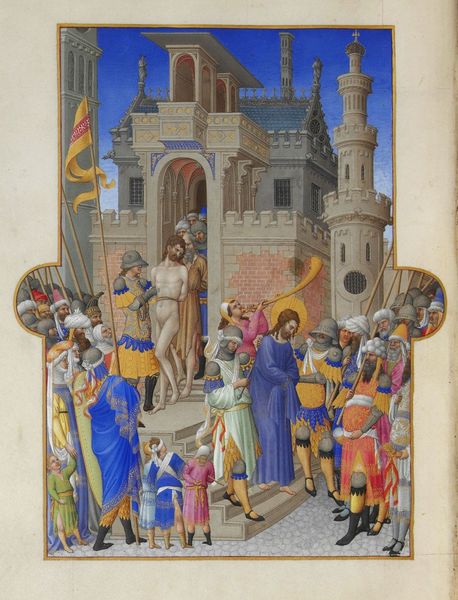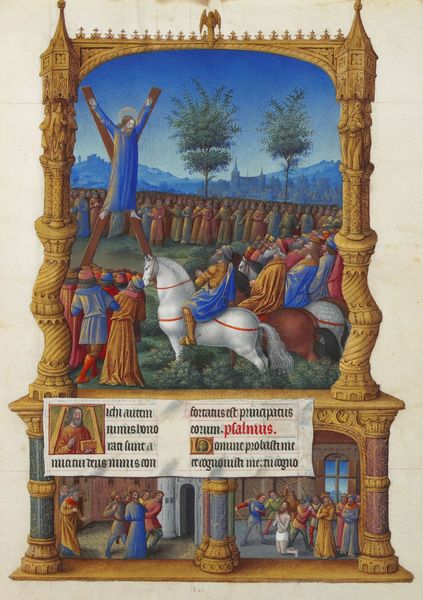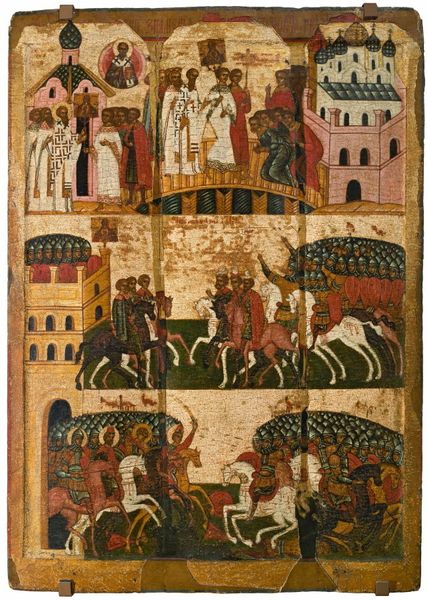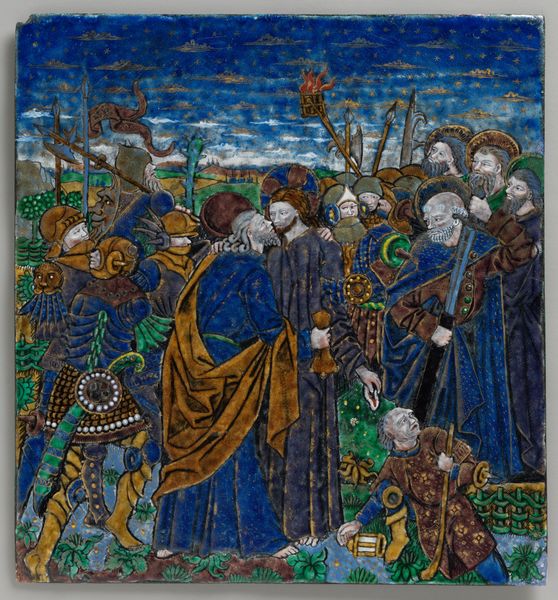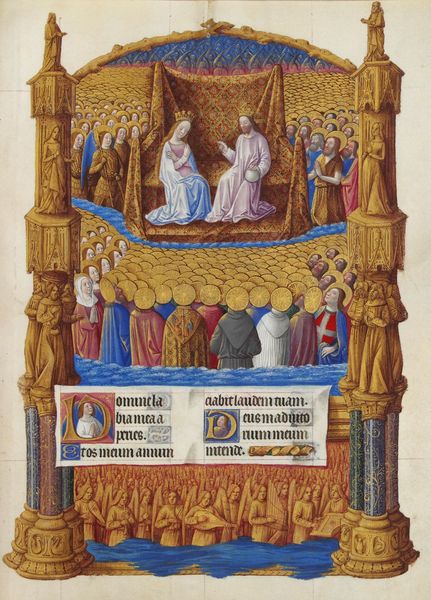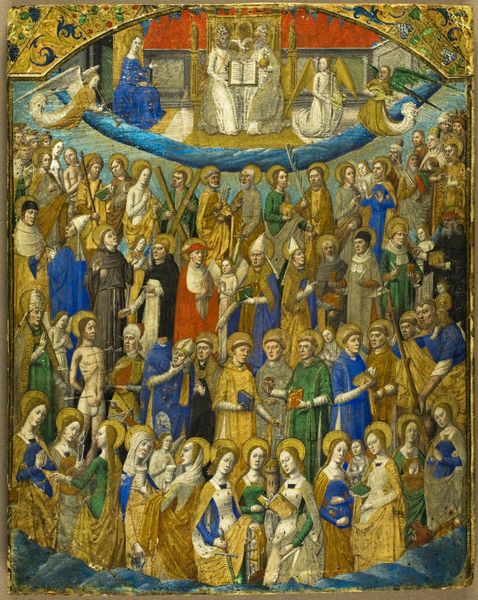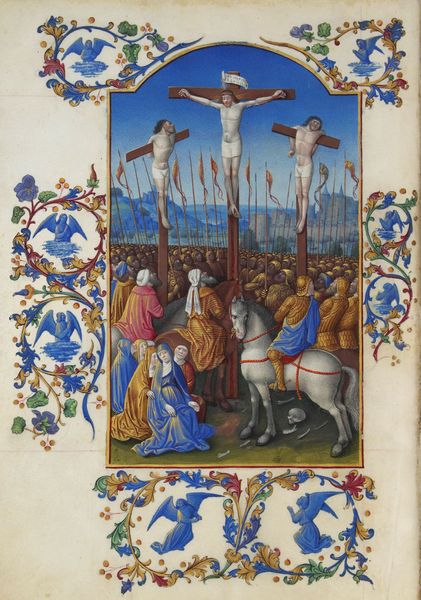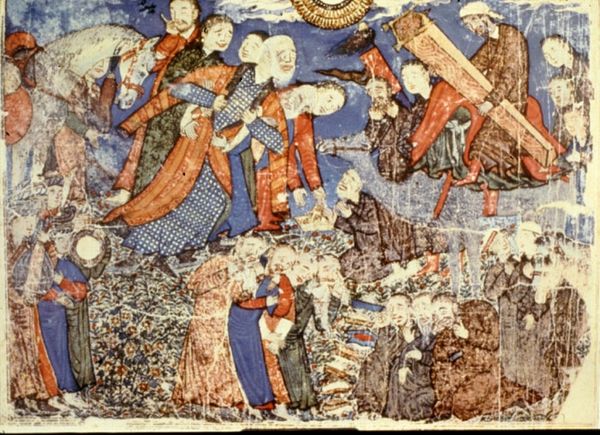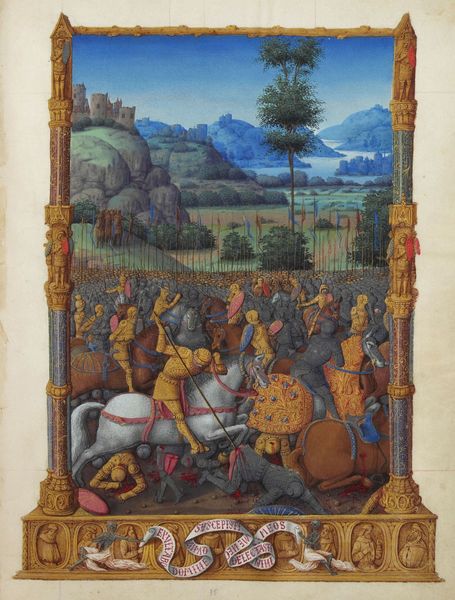
tempera, painting
#
narrative-art
#
tempera
#
painting
#
landscape
#
figuration
#
oil painting
#
history-painting
#
international-gothic
#
italian-renaissance
#
miniature
Dimensions: 29 x 21 cm
Copyright: Public domain
Curator: Here we have what's titled “Scene: Adoration of the Magi,” attributed to the Limbourg Brothers. The medium appears to be tempera on, I believe, vellum, consistent with manuscript illumination of the period. Editor: My first impression is the striking division in this painting—almost like two separate worlds colliding. One is an intimate, sheltered gathering, and the other an explosion of exotic, hierarchical opulence. Curator: Precisely! Structurally, note how the humble stable occupies the lower left quadrant, in stark juxtaposition with the grand procession flowing in from the right. Consider how that celestial event, painted in deep blues and golds, brackets the scene and underscores a hierarchy. The composition, though somewhat crowded, guides our eye through a series of carefully arranged planes, from the foreground figures to the distant landscape and city. Editor: Right, and the robes—note the fabric, patterns and crowns that indicate status. The painting can be viewed through a lens of class conflict; the painting glorifies and perhaps critiques opulent elites from foreign lands coming to recognize divinity born in humble circumstances, almost against their own intentions and deeply held views. It's worth remembering, the "exotic" is depicted from a white European perspective; can it fairly be viewed as Orientalist? Curator: That is certainly an important reading. Looking again at the figures, observe the masterful rendering of facial expressions and the exquisite detail in the garments; a detail that signals a high level of technique but perhaps also reinforces ideas of the foreign other. Also, observe the contrast in surface quality and facture; see where the artists built up layers to represent textiles or hair, while the treatment of light creates spatial depth. Editor: It is worth mentioning, isn’t it, that this painting offers the viewers, likely wealthy, educated aristocrats, of the time a fantasy of social change that has yet to arrive. But even today it prompts discussion of who belongs, and how do the powerful respond to change they cannot avoid. The artists make the elites recognizable and relatable enough to still retain the viewer's trust. Curator: Indeed, this attention to details underscores its complexity, where technique supports narrative intention. A dynamic tension binds every quadrant together. Editor: Overall, its narrative power remains impressive; that’s where its enduring impact lies.
Comments
No comments
Be the first to comment and join the conversation on the ultimate creative platform.
